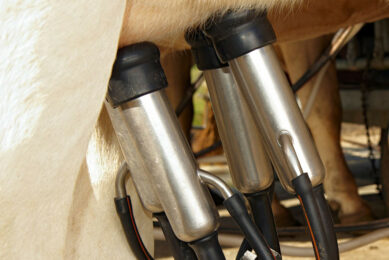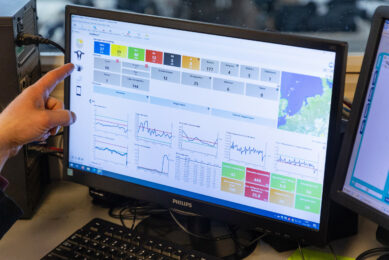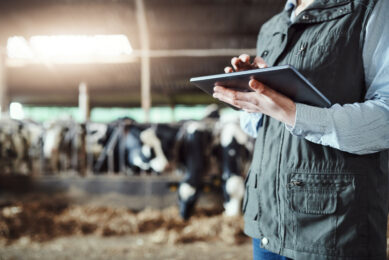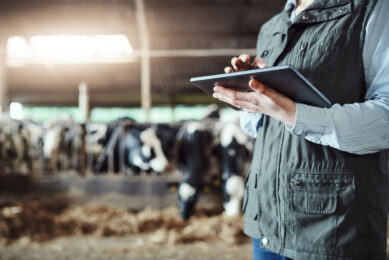How dairy farmers can prepare for the agtech revolution
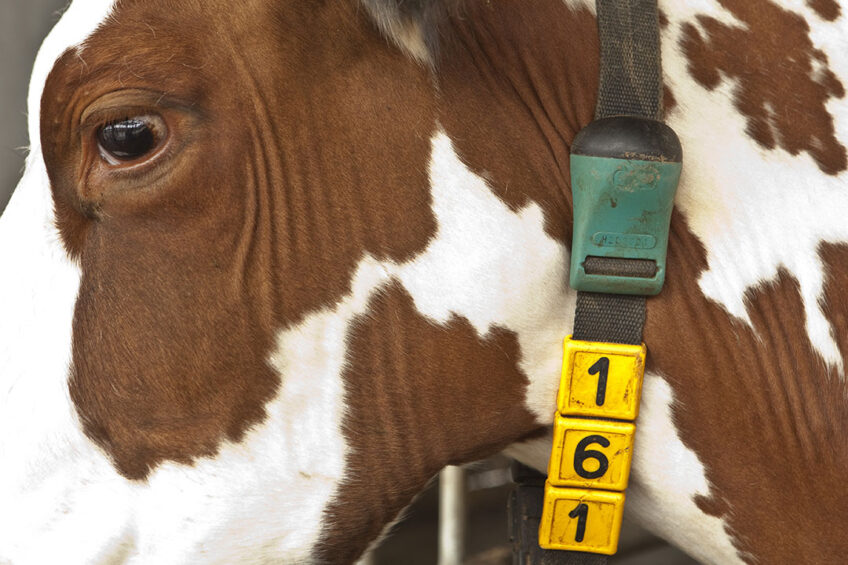
Robots, the Internet of Things (IoT), and artificial intelligence (AI) are daily fixtures in hospitals, and this technology is now transforming the dairy industry.
In healthcare, these innovations were first met with concern regarding job losses and, within a short time, became widely accepted. Now, more farmers are embracing this technology, pushing the dairy industry into an analogous position that healthcare occupied years ago. Dairy farmers have an advantage: by observing the changes in healthcare, dairy farmers can learn and prepare their workforce for an inevitable and seamless agtech revolution.
Robots
At the Aalborg University Hospital, robots efficiently transport up to 3,000 blood samples at a stable temperature to ensure accurate analysis and enhanced patient care. Beyond logistical tasks, one robot named PARO responds to touch and sound to reduce stress, anxiety, and loneliness for patients.
Agricultural robots are being embraced in a similar manner on the farm. For example, robots can clean the barns, feed the animals, and even let cows choose when to be milked. AgriTech Capital estimates that over 1 million cows worldwide are milked by robots, and the Dairyland Initiative group found that one robot could manage an average of 53-70 cows.
Internet of Things (IoTs)
By providing real-time and relevant data to healthcare professionals, IoT technologies, such as smart devices and wearables, have transformed the work of hospital staff. These health devices eliminate the need for continuous monitoring, allowing bedside staff to allocate their time to other tasks.
IoT devices are following a similar trend in agribusiness. They can precisely assess the inputs and management of dairy farms in real-time, improving accuracy and saving time for farmers. Some of the visible examples of this in our dairy industry are the millions of wearable devices such as collars and ear tags, and the smart rumen bolus of SmaXtec, which is the newest technology in the US dairy market and is already used by hundreds of thousands of cows. Being able to monitor the movements, productivity, and health of cows before any issues arise can save hundreds of dollars per year for each animal on a dairy farm.
Artificial Intelligence (AI)
Medical errors, which cost the healthcare industry US$1.9 billion annually and result in over 200,000 fatalities, are often caused by fatigue, memory lapses, lack of experience or training, and misunderstandings. The use of AI in healthcare, provided by companies like Google Health and Babylon Health, has already improved disease detection and patient outcome predictions.
How can we avoid mistakes on our farms? AI can help us overcome human errors by accurately analysing data, forecasting yields, detecting potential health issues, optimising resource allocation and connecting decisions to market needs and prices. AI computations can also play a key role in tackling carbon credits and resource scarcity. Moreover, big data and cloud computing enable farmers to deal with the real challenges they face from weather, genetics, market fluctuations and the microbiome of soil and animals. For example, Ever.Ag is a technology company that specialises in dairy, which allows for better decision-making in real-time based on market changes, with fewer errors.
Lessons for ag
In healthcare, robots, IoT, and AI have both improved healthcare quality and displaced jobs, even highly skilled labour. But we still have medical professionals; their roles have just shifted.
A study by MIT and Brigham and Women’s Hospital found that many patients are willing to interact with robots for some healthcare services, but they still want human contact for more complicated or sensitive issues. Currently, medical jobs have a 19% job growth and will create more than 2.3 million jobs in the next few years – the best job outlook of any field. Robots, IoT, and AI are not likely to replace human healthcare workers. Rather, they are ready to improve their skills and allow them to focus on more meaningful tasks.
On the other hand, agricultural employment in the US is only expected to increase by 1%. Even before the agritech revolution, agriculture had suffered a “people problem” for decades due to poor pay and harsh conditions. As agri executive search group Kincannon & Reed says, “If it was difficult to find good help before, then it’s even more difficult now.”
What does this mean for the dairy industry? Automation will target jobs that people don’t want to do. Like the transformation we’ve seen in healthcare, this technology will pave the way for more stimulating, higher-paying work that attracts and retains a flexible workforce. A McKinsey survey revealed that more than 50% of large farms and nearly a quarter of small farms are using (or planning to use) precision agriculture technology, so the demand for high-skill jobs will only grow. Future dairy workers should be recruited with new skills: data analysis, software engineering, and coding.
A prosperous road for the workforce
In fact, many argue that AI alone will lead to long-term job growth by increasing productivity and consumption and creating new categories of human jobs that complement the tasks performed by AI systems. Using robotics, sensors and AI to grow food efficiently, precisely, and cost-effectively, not only offers safe and affordable food but paves a prosperous road for the workforce.
How can dairy farmers cultivate and retain a talented, flexible workforce? As I noted in my book, The Future of Agriculture, education and training programmes are proven ways to cultivate a workforce that evolves with each innovation. While companies like Ever.Ag can strengthen agribusinesses from the top down by assessing risks and capturing opportunities; companies like Plenty can strengthen organisations bottom-up through employee training.
The dairy industry could increase productivity and bring in new wealth if farmers follow the example of healthcare and invest in the workforce now. This technological change, along with workforce readiness, is an opportunity to create a prosperous dairy industry that benefits all.



